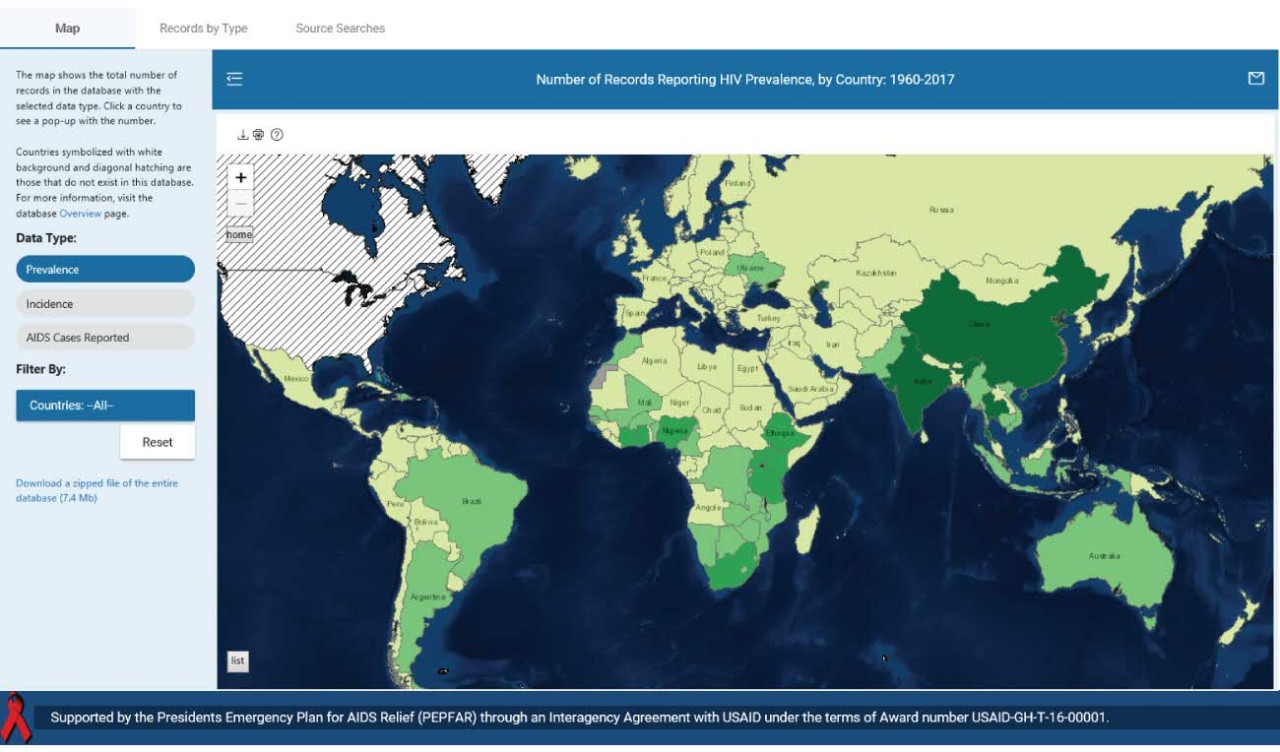Data from the 22nd International AIDS Conference Featured in Census Bureau Database
The U.S. Census Bureau has added 205 unique sources of data from around the world to its HIV/AIDS Surveillance Data Base, providing easy access to key findings in one place.
Nations are devising innovative ways to reach younger people, marginalized communities and men who are less likely to be tested for HIV.
The data were gleaned from presentations and posters showcased at the 22nd International AIDS Conference held in summer 2018 in Amsterdam. The meeting, which takes place every other year, is the largest global health conference convened to address a single health issue.
Some 16,000 people from 175 countries attended last year’s conference. Three-quarters of them were from Western/Central Europe, Sub-Saharan Africa and North America.
New Data
Most of the new sources focus on a single country — and more than a third provide data on five nations in Sub-Saharan Africa: South Africa, Nigeria, Uganda, Tanzania and Malawi.
In the graphic below, not all countries are shown in the legend label as many had only one or two data sources.
Popular Themes
Four popular themes emerged from the conference presentations and posters now available in the Census Bureau’s database.
- Treatment as prevention
- Reductions in HIV incidence
- Community-based mobilization
- Innovative HIV testing programs
HIV Incidence
While most HIV estimates look at prevalence — the measure of existing infections in the population — incidence measures new infections occurring within a certain time period.
This is very important for monitoring and tracking progress in the control of the HIV epidemic, but incidence studies are rare because they are expensive and often require long time periods or large amounts of data.
Now, it’s beginning to change thanks to the Population-Based HIV Impact Assessment (PHIA) Project. The PHIA Project is funded by The United States President’s Emergency Plan for AIDS Relief (PEPFAR).
The project collects data on incidence and many other HIV indicators in households across several hard-hit countries. Results from PHIA surveys in 11 countries are currently included in the HIV/AIDS Surveillance Data Base, with national incidence data available for most.
In some cases, PHIA provides the only information on incidence in the national or general population for these countries.
Several conference presentations referred to PHIA data. New incidence data from PHIA surveys in additional countries will be added to the HIV/AIDS Surveillance Data Base as more results are released.
National HIV Awareness Days
HIV Testing
International health organizations have set ambitious goals to ensure that by 2020, 90% of those who are HIV positive will know their condition.
Nations are devising innovative ways to reach younger people, marginalized communities and men who are less likely to be tested for HIV.
Among them:
- Self-testing. This is a new strategy to increase the likelihood of knowing one’s HIV status and providing care and treatment. Self-testing can be done in the home or wherever the tester feels most comfortable, which addresses privacy and convenience concerns. However, self-testing samples ideally should be sent to a laboratory for final testing.
- Targeted testing. Reaching out to the contacts of those testing HIV positive is rapidly taking off and proving to be a successful strategy in identifying HIV positive individuals.
- Distribution of HIV test kits. The push to provide HIV test kits to young women and their primary partners is underway in many locations around the globe. Communities are also using a networked approach to reach the hardest to locate. Numerous studies show that self-testing is successful in a variety of settings and population groups.
The Census Bureau’s Role
Since the first international conference in 1985, the Census Bureau’s Health Studies Branch in the Population Division has attended as both a presenter and collector of HIV prevalence and incidence data.
But this was the first time the Census Bureau had an exhibition booth highlighting its work in the HIV/AIDS arena.
Photo by Timothy Fowler, U.S. Census Bureau
Because conference presentations are not always made available online, data are collected through the use of a camera and are then processed and included in annual releases of the HIV/AIDS Surveillance Data Base.
The database includes all countries and areas of the world with at least 5,000 population, with the exception of Northern America (including the United States) and U.S. territories. It also contains data from other sources, such as scientific journal articles and reports.
A recently added database feature is an interactive map that allows users to navigate the various types of data records by country. The HIV/AIDS Surveillance Data Base is supported with funding from the President’s Emergency Plan for AIDS Relief or PEPFAR.
Subscribe
Our email newsletter is sent out on the day we publish a story. Get an alert directly in your inbox to read, share and blog about our newest stories.
Contact our Public Information Office for media inquiries or interviews.
-
HealthDocumenting HIV/AIDS From Afghanistan to ZimbabweJuly 23, 2018The Census Bureau catalogues data on HIV and AIDS cases and deaths for 206 countries, not including Northern America and U.S. territories.
-
Population2020 Census Is Around the Corner but Not Just for the United StatesOctober 15, 2018Since the 1930s, the U.S. Census Bureau has helped more than 100 countries around the world conduct their censuses.
-
HealthYour Health Care Is in Women’s HandsAugust 14, 2019Since 2000, women’s participation and median earnings in high-education health care jobs are up while earnings in other health care jobs show little gains.
-
NAICS Sector 31-33 ManufacturingSome Less Populous States Have High Manufacturing Revenue Per CapitaSeptember 29, 2025Today is the start of a week of celebrations at the Census Bureau marking the 14th annual Manufacturing Day on October 3.
-
Families and Living ArrangementsCouples’ Finances: Married but SeparateSeptember 24, 2025While most married couples had joint bank accounts, fewer shared all their financial accounts.
-
FertilityChildlessness on the Rise — Except for Women Ages 45 to 50September 23, 2025From 2014 to 2024, the share of older mothers rose as fewer teens and women in their 20s and 30s had children.
-
Business and EconomyHow AI and Other Technology Impacted Businesses and WorkersSeptember 17, 2025Businesses report that, in most cases, adoption of new technologies like robotics and Artificial Intelligence had no impact on worker numbers or skill level.








